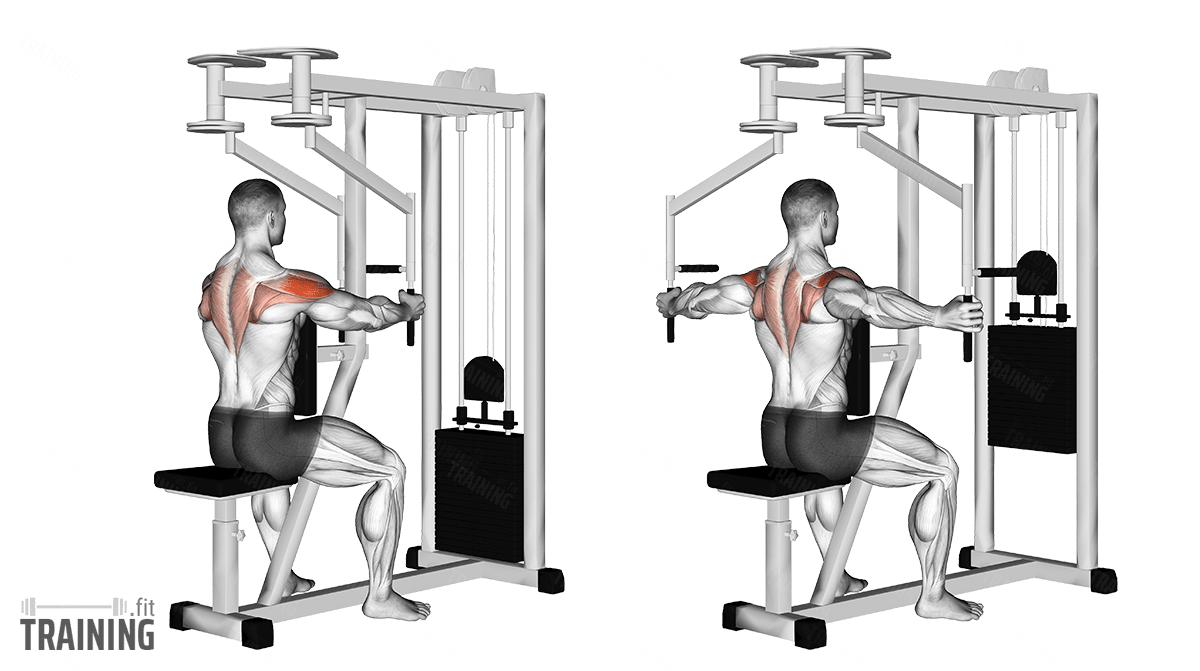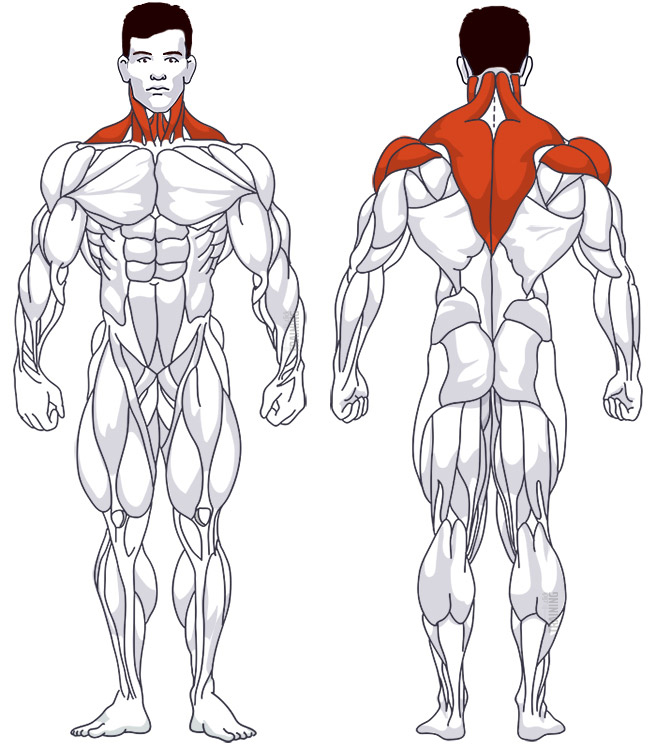Reverse Butterfly
Compound exercise, MachineThis article is verified by 1 study/publication.
Overview

Main muscles
- Neck: Trapezius muscle
(Musculus trapezius) - Shoulder: Posterior deltoid muscle
(Musculus deltoideus, posterior deltoid muscle) - Shoulder: Medial deltoid muscle
(Musculus deltoideus, Pars acromialis)
Training plans
Reverse Butterfly is a suitable substitute for similar exercises in Shoulder training or as a supplement to various training plans.
Reverse Butterfly: Basics and alternatives

Involved main muscle groups:
Reverse Butterfly
As its name suggests, the Reverse Butterfly is an exercise that’s the opposite of the Chest muscle exercise Butterfly. It’s also a machine exercise, but instead of focusing on the chest, it targets the shoulders, neck, and back. In this exercise, you sit facing the machine and move the weight by extending your arms outward, rather than bringing them together in front of your body.
The main muscle focus is on the posterior deltoid muscle (rear shoulder), but the neck and back are also engaged, making this a compound exercise.
For a free-weight alternative, you can perform Reverse Flys with Dumbbells or a Fitness band.
Correct Execution
Most Reverse Fly training machines have different grips to choose from. You typically have the option of a neutral grip (or hammer grip) and an upper grip.
Your choice of grip is largely a matter of personal preference, although a 2013 study[1] found that the neutral grip led to slightly stronger muscle activation overall.
So, if you want to maximize your shoulder workout, the neutral grip is recommended.
Video tutorial
Step-by-Step Instruction
Sit on the seat cushion facing the machine. Slide forward until your upper body touches the front cushion.
Grab the handles with your hands in your preferred variation (see above).
Slightly retract your shoulders. You’re now in the starting position.
Slowly and controlled, spread your arms. End the movement when your shoulders need to move more intensely to continue.
Pause briefly in that position, then move your arms back to the starting position just as controlled, without completely resting the weight before the next repetition.
Common mistakes
A frequent mistake is moving the shoulders along with the weight. Make sure your shoulders remain tense throughout the entire exercise. Once your shoulders move during the arm extension, stop the movement and return to the starting position.
Ideally, you should move the weight evenly throughout the entire movement. Swinging or jerking the weight reduces muscle stimulation.
Sources
- Effect of Hand Position on EMG Activity of the Posterior Shoulder Musculature During a Horizontal Abduction Exercise. Schoenfeld, B., Sonmez, R. G. T., Kolber, M. J., Contreras, B., Harris, R., & Ozen, S. (2013). Journal of Strength and Conditioning Research, 27(10), 2644–2649. doi:10.1519/jsc.0b013e318281e1e9. URL: https://pubmed.ncbi.nlm.nih.gov/23302754/, abgerufen am 19.11.2020